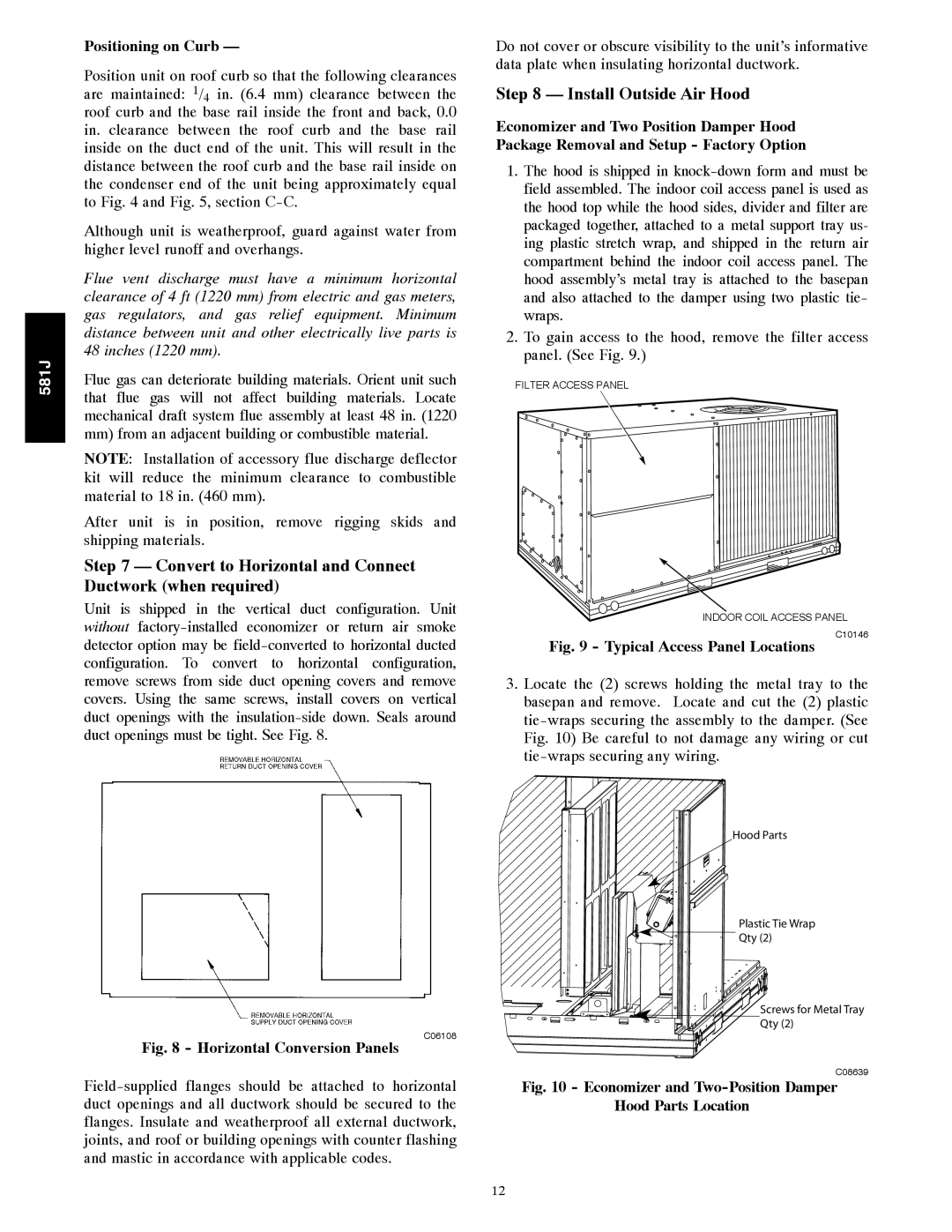581J specifications
The Bryant 581J is a high-efficiency gas furnace that exemplifies advanced heating technology and innovative design. Known for its reliability and comfort, the Bryant 581J offers impressive performance features that cater to both residential and commercial heating needs. One of its standout characteristics is the two-stage heating system, which allows the furnace to operate at a lower stage when the heating demand is modest, providing improved comfort and energy efficiency. This feature also minimizes temperature fluctuations, ensuring a more consistent and comfortable indoor environment.Energy efficiency is a critical aspect of the Bryant 581J. With an annual fuel utilization efficiency (AFUE) rating of up to 96%, this furnace is designed to convert a high percentage of fuel into usable heat, which helps homeowners save on energy bills. The high-efficiency design also contributes to a reduced carbon footprint, aligning with modern environmental concerns.
The Bryant 581J is equipped with technologically advanced features, including the ComfortTech™ control system. This system enables enhanced temperature regulation and integrates easily with smart home systems, allowing homeowners the convenience of remote control through smartphones and tablets. Additionally, the furnace includes an electronically commutated motor (ECM) blower, which optimizes airflow and reduces energy consumption while enhancing the overall comfort level within the space.
Noise reduction is another key characteristic of the Bryant 581J. The furnace is engineered with sound-dampening technology, resulting in quieter operation compared to conventional furnaces. This attention to noise management makes it an appealing choice for residential applications, where peace and tranquility are crucial.
The durable construction of the Bryant 581J ensures longevity and reliability. With a robust cabinet and quality materials, it is built to withstand the rigors of daily operation. Furthermore, the furnace comes with a warranty that provides peace of mind, protecting the investment over the years.
Overall, the Bryant 581J represents a blend of efficiency, advanced technology, and reliable performance. With its high AFUE rating, innovative features, and quiet operation, it stands out in the market as a top choice for anyone seeking a dependable heating solution. Whether for new installations or replacements, the Bryant 581J is designed to meet the heating demands of today's energy-conscious homeowners.

